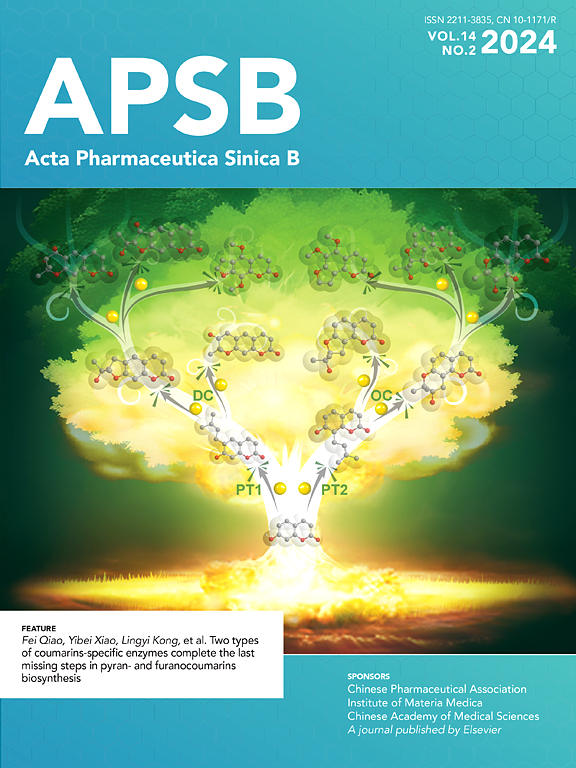A small molecule cryptotanshinone induces non-enzymatic NQO1-dependent necrosis in cancer cells through the JNK1/2/Iron/PARP/calcium pathway
IF 14.7
1区 医学
Q1 PHARMACOLOGY & PHARMACY
引用次数: 0
Abstract
Human NAD(P)H: quinone oxidoreductase 1 (NQO1) is a flavoenzyme expressed at high levels in multiple solid tumors, making it an attractive target for anticancer drugs. Bioactivatable drugs targeting NQO1, such as β-lapachone (β-lap), are currently in clinical trials for the treatment of cancer. β-Lap selectively kills NQO1-positive (NQO1+) cancer cells by inducing reactive oxygen species (ROS) via catalytic activation of NQO1. In this study, we demonstrated that cryptotanshinone (CTS), a naturally occurring compound, induces NQO1-dependent necrosis without affecting NQO1 activity. CTS selectively kills NQO1+ cancer cells by inducing NQO1-dependent necrosis. Interestingly, CTS directly binds to NQO1 but does not activate its catalytic activity. In addition, CTS enables activation of JNK1/2 and PARP, accumulation of iron and Ca2+, and depletion of ATP and NAD+. Furthermore, CTS selectively suppressed tumor growth in the NQO1+ xenograft models, which was reversed by NQO1 inhibitor and NQO1 shRNA. In conclusion, CTS induces NQO1-dependent necrosis via the JNK1/2/iron/PARP/NAD+/Ca2+ signaling pathway. This study demonstrates the non-enzymatic function of NQO1 in inducing cell death and provides new avenues for the design and development of NQO1-targeted anticancer drugs.

求助全文
约1分钟内获得全文
求助全文
来源期刊

Acta Pharmaceutica Sinica. B
Pharmacology, Toxicology and Pharmaceutics-General Pharmacology, Toxicology and Pharmaceutics
CiteScore
22.40
自引率
5.50%
发文量
1051
审稿时长
19 weeks
期刊介绍:
The Journal of the Institute of Materia Medica, Chinese Academy of Medical Sciences, and the Chinese Pharmaceutical Association oversees the peer review process for Acta Pharmaceutica Sinica. B (APSB).
Published monthly in English, APSB is dedicated to disseminating significant original research articles, rapid communications, and high-quality reviews that highlight recent advances across various pharmaceutical sciences domains. These encompass pharmacology, pharmaceutics, medicinal chemistry, natural products, pharmacognosy, pharmaceutical analysis, and pharmacokinetics.
A part of the Acta Pharmaceutica Sinica series, established in 1953 and indexed in prominent databases like Chemical Abstracts, Index Medicus, SciFinder Scholar, Biological Abstracts, International Pharmaceutical Abstracts, Cambridge Scientific Abstracts, and Current Bibliography on Science and Technology, APSB is sponsored by the Institute of Materia Medica, Chinese Academy of Medical Sciences, and the Chinese Pharmaceutical Association. Its production and hosting are facilitated by Elsevier B.V. This collaborative effort ensures APSB's commitment to delivering valuable contributions to the pharmaceutical sciences community.
 求助内容:
求助内容: 应助结果提醒方式:
应助结果提醒方式:


